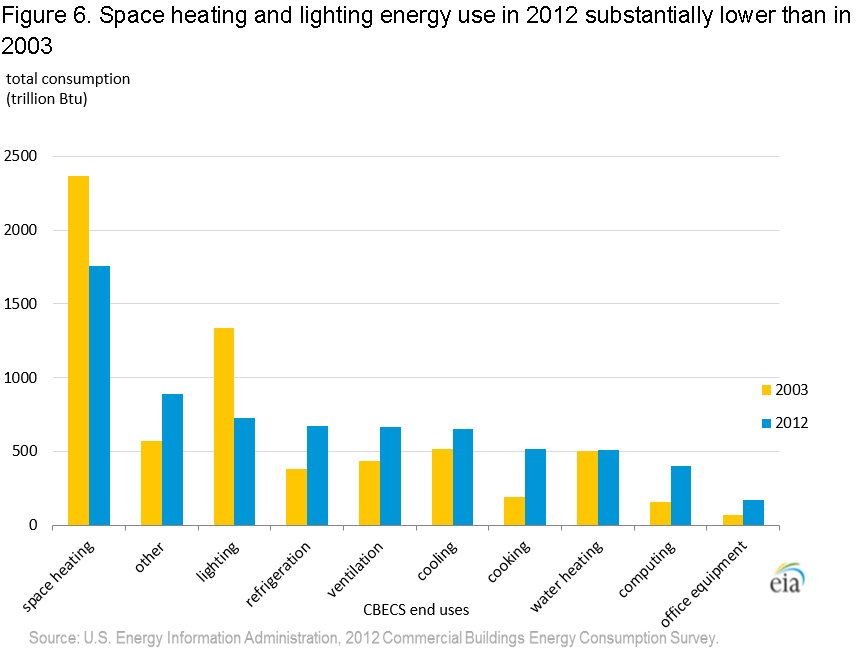Providing energy-efficient and comfortable HVAC systems is an important task for HVAC engineers and designers. In this first part, learn about the importance of air handling units (AHUs) within building HVAC systems.

Data available from the 2012 Commercial Buildings Energy Consumption Survey (CBECS), conducted by the U.S. Energy Information Administration, shows the United States consumes 6,963 trillion Btu of energy generated for commercial building use (see Figure 1). Of all the commercial building energy usage identified—space heating (25%), ventilating (10%), and air conditioning/cooling (9%)—HVAC accounts for 44% of the energy use.
As most HVAC designers are aware, there has be a tremendous effort to reduce energy use through the development of energy codes and standards, such as ASHRAE Standard 90.1-2016: Energy Standard for Buildings Except Low-Rise Residential Buildings and ASHRAE Standard 189.1: Standard for the Design of High-Performance Green Buildings, among others. These energy standards and associated building related codes focus on identifying minimum requirements for new building construction, building additions and renovations. They provide HVAC designers with both mandatory and prescriptive requirements to ensure a level of energy savings is provided by requiring efficient system designs and minimum efficiency of mechanical equipment. And, although the CBECS information is a little outdated and additional research is needed, these efforts appear to be working.
In reviewing the CBECS information since 2003, it appears that overall energy use in U.S. commercial buildings increased by about 7% during the same period in 2012 (see Figure 2). The slower growth in the building energy demand is partly attributed to newer construction built to higher energy performance standards. This new construction features more efficient systems, with decreased demand of the energy-consuming equipment. Although cooling and ventilation demands did rise, the CBECS data shows direct improvements in both space heating and lighting in the energy use in buildings.
Respondents to the Consulting-Specifying Engineer 2017 HVAC & Building Automation Systems study identified seven high-level findings that were important to customers and thus designers of HVAC and BAS systems. Three of the seven findings that were identified are related to air handling:
- HVAC controls (70%), air handlers (68%), and fans and/or air movement systems (67%) were in the top three types of equipment being specified by engineers.
- Energy efficiency and inadequate budgets identified for good designs were creating challenges that are affecting the future of HVAC systems.
- Forty percent of the engineers that responded indicated that the interoperability and complementing systems, and inadequate budgets were also challenges for designing BAS options.
AHUs must be important if there were listed second of the top three HVAC and BAS systems commonly specified by the study respondents. Because AHU equipment typically has fans and controls to operate properly, AHUs cover the top three items being specified.
Providing energy-efficient and comfortable HVAC systems for commercial buildings is an important task for HVAC engineers and designers. Energy efficiency in particular has been a focus in recent years as building codes and standards have become more stringent. Because a building’s overall energy use is impacted by both initial design decisions and the owner’s project budget, owners, property managers, and/or those in charge of budgetary responsibilities for projects should fully understand how decisions impact energy use. Although actual information regarding how paybacks were calculated is absent, the respondents of the study indicated the average payback period for AHU designs and installations was just 24 months, even with budgetary challenges.
By the numbers
According to the 2019 HVAC & Building Automation Systems study, 69% of respondents are currently specifying air handling units (AHUs), and another 34% plan to specify in the next 1 to 2 years. Source: Consulting-Specifying Engineer 2019 HVAC & Building Automation Systems study



